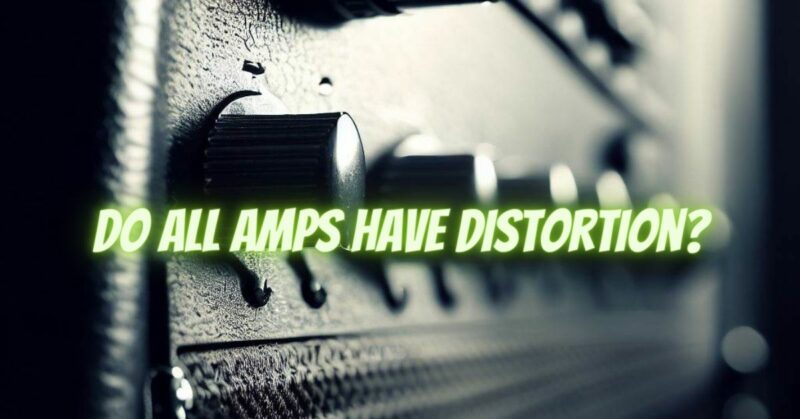Distortion is a beloved effect among guitarists and bassists, known for its ability to add grit, sustain, and harmonically rich tones to their instrument’s sound. However, not all guitar or bass amplifiers come equipped with built-in distortion capabilities. In this article, we will explore the presence of distortion in different types of guitar and bass amplifiers, shedding light on the various options available to musicians seeking to incorporate this desired effect into their playing.
- Clean Amplifiers: Preserving Sonic Purity
Many guitar and bass amplifiers are designed to provide a clean and transparent amplification of the instrument’s sound. Clean amplifiers aim to reproduce the input signal faithfully without introducing intentional distortion. These amplifiers prioritize clarity, headroom, and accurate sound reproduction, making them suitable for genres that require a pristine, unaffected tone such as jazz, country, and acoustic music. While these amplifiers may not have built-in distortion, they serve as an excellent platform for utilizing external distortion pedals or effects units.
- Overdriven and Distorted Amplifiers: Delving into Sonic Aggression
Unlike clean amplifiers, some guitar and bass amps are specifically designed to produce intentional distortion. These amplifiers often feature dedicated gain stages, preamp sections, or specific circuit designs that push the signal into overdrive, resulting in varying degrees of distortion. Overdriven and distorted amplifiers are commonly associated with genres such as rock, blues, and heavy metal, where the raw power and harmonically complex tones of distortion are integral to the desired sound. These amplifiers offer built-in distortion capabilities, allowing players to achieve their desired level of saturation without relying on external effects.
- Hybrid Amplifiers: Finding a Balance
Hybrid amplifiers combine the characteristics of both tube and solid-state amplification. They often incorporate a tube-driven preamp section for added warmth and dynamics, while the power amp section utilizes solid-state components. Hybrid amplifiers can offer varying degrees of distortion depending on their design and intended purpose. Some models may include built-in distortion circuits or dedicated gain channels, providing players with the option to dial in their desired level of distortion without the need for additional effects.
- Modeling Amplifiers: Digital Versatility
Modeling amplifiers have gained popularity in recent years, offering a wide range of amp and effect simulations in a single unit. These amplifiers utilize digital technology to replicate the characteristics of various guitar and bass amplifiers, including their distortion capabilities. Modeling amps often provide a selection of amp models, allowing musicians to access different types of distortion tones without the need for multiple amplifiers or external effects pedals. These versatile amplifiers can be a convenient solution for players looking to experiment with different distortion sounds and genres.
- External Effects and Pedals: Expanding Sonic Horizons
Even if a guitar or bass amplifier does not have built-in distortion, musicians can still incorporate distortion into their sound by utilizing external effects and pedals. By connecting distortion pedals to the amplifier’s input or utilizing the effects loop, players can introduce their preferred distortion tones while still benefiting from the amplifier’s inherent sonic characteristics. This approach offers the flexibility to tailor the distortion sound to individual preferences and experiment with various pedal combinations.
Conclusion:
While not all guitar or bass amplifiers come equipped with built-in distortion capabilities, there are numerous options available to musicians seeking to incorporate distortion into their sound. Clean amplifiers prioritize sonic purity, while overdriven and distorted amplifiers cater to those seeking aggressive and harmonically rich tones. Hybrid amplifiers find a balance between tube-driven warmth and solid-state reliability, while modeling amplifiers provide versatile simulations of various amplifier types and distortion sounds. Additionally, external effects and pedals offer a flexible solution for introducing distortion into any amplifier setup. The choice of amplifier depends on personal preference, musical style, and the desired level of control over the distortion sound. With the right combination of amplification and effects, guitarists and bassists can explore the sonic realms of distortion and unlock a world of creative possibilities.


